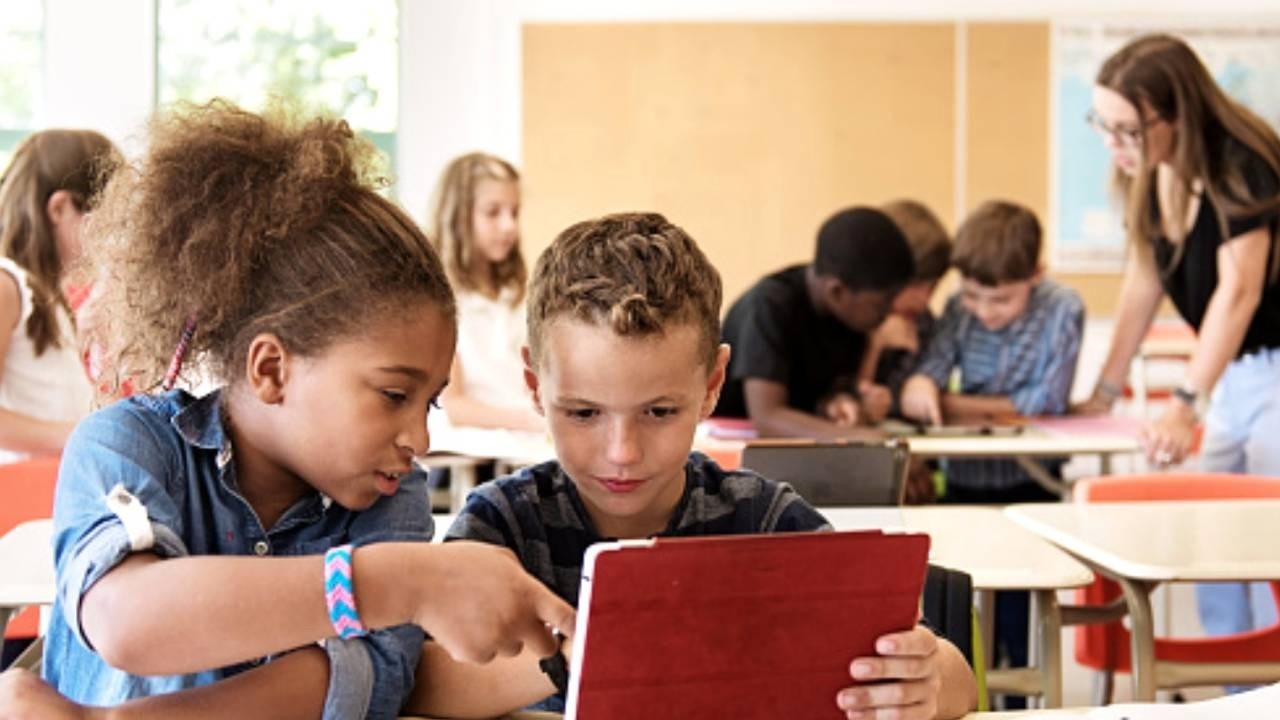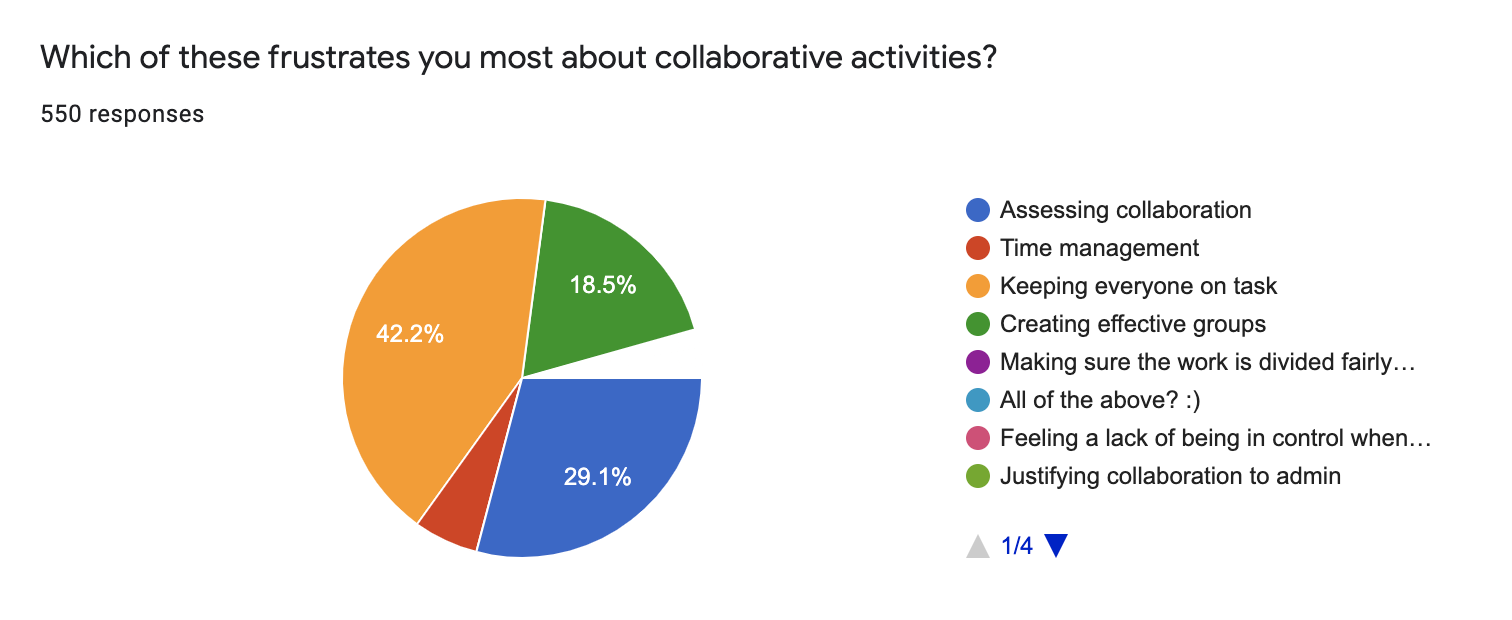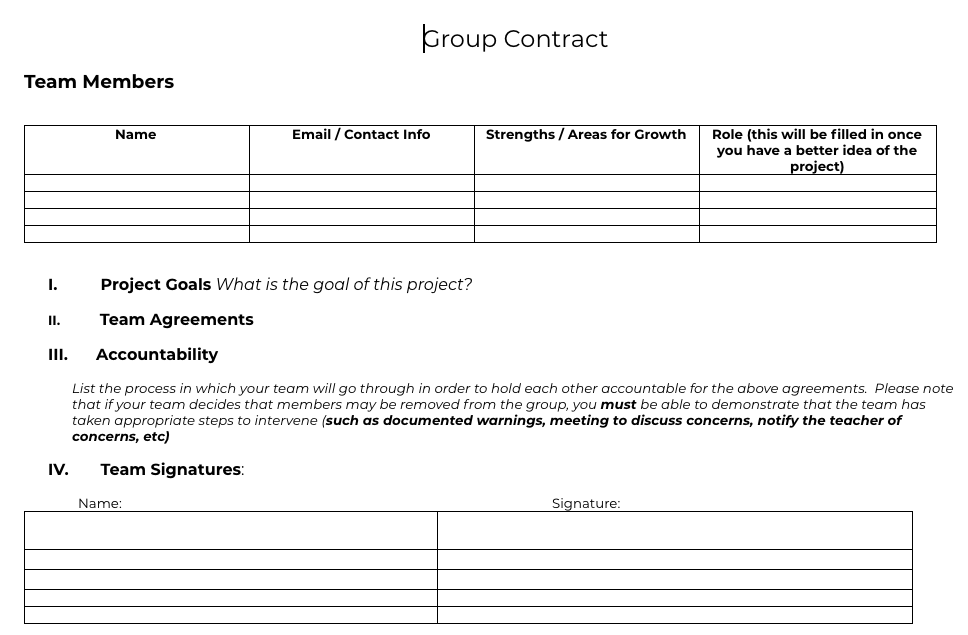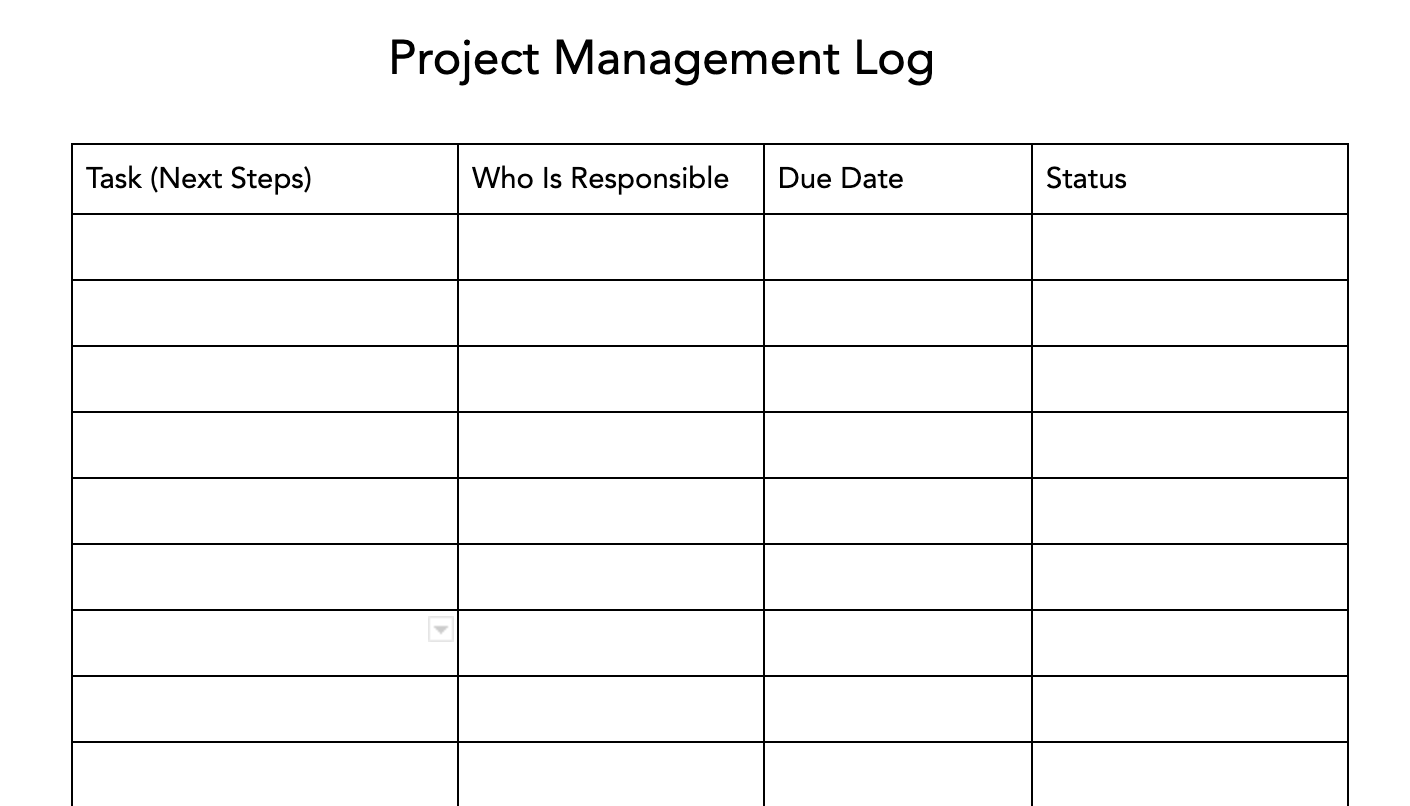
Eliminate Off-Task Behavior During Group Work
Feb 23, 2023It’s apparent that our society needs better collaborators. Just look at public discourse on social media or the deep divisions in the political system. Or take a look at this survey of over 3000 employers and see that the most desired skill in the 21st century is collaboration. These reasons and more heighten the need for the education system to emphasize and teach collaboration. However, that is easier said than done. I conducted a survey of more than five hundred teachers attempting to learn what teachers struggle most with when teaching collaboration and assigning group work.
The results were not surprising.
Constant Off-Task Behavior

 When asked what frustrates teachers most about collaborative activities, given the options of ‘assessing collaboration,’ ‘time management,’ ‘creating groups,’ ‘team accountability,’ and ‘constant off-task behavior,’ off-task behavior nearly doubled the number of responses of all the other options. Managing students and their time is clearly a shared struggle. Students– people– are social beings. Assigning group work in school gives an opportunity for students to socialize, which isn’t necessarily a bad thing, but this can often lead to off-task behavior.
When asked what frustrates teachers most about collaborative activities, given the options of ‘assessing collaboration,’ ‘time management,’ ‘creating groups,’ ‘team accountability,’ and ‘constant off-task behavior,’ off-task behavior nearly doubled the number of responses of all the other options. Managing students and their time is clearly a shared struggle. Students– people– are social beings. Assigning group work in school gives an opportunity for students to socialize, which isn’t necessarily a bad thing, but this can often lead to off-task behavior.
Tools for successful collaboration.
This is why it’s so important teachers have structures and tools in place to help students stay on task. For instance, the Group Contract is a tool to give students at the beginning of a collaborative activity where as a group they create agreements for how they will conduct themselves in a collaborative setting.

Get a free template of the Group Contract here.
Another tool and practice to help students stay on task is the Project Management Log (PML). This resource is basically a task list, where students assign each other and themselves tasks during group work and expectations for when they will complete it. Teachers can ask students to be specific when filling out the PML, helping them develop the skill of planning and prioritizing tasks. Students can also learn to use the PML to hold each other accountable. If someone is off task or not doing their share of the work, the PML is a concrete tool to point to and remind one another of what needs to be accomplished.

Get a free template of the Project Management Log here.
Build a Collaborative Culture
One of the best ways to stem off-task behavior when assigning group work is to not make group work a rarity in your classroom. One of the reasons so many students struggle with collaborative activities is because they never learn to actually collaborate. Collaboration is a skill, and skills are like muscles. The more you work them out, the stronger they become. Unfortunately, too many students have spent their time in school only working at individual desks, for individual grades, for individual achievement. They need regular practice working in groups and staying on task despite the distractions.
This is why teachers should be intentional about establishing a collaborative culture in their classrooms, giving students plenty of practice to refine their collaborative skills.
One way to set up this culture is leading students through an activity to create a class contract. A class contract, also known as a social contract, is a list of norms and expectations for a class that students help create and then abide by the rest of the year. In a collaborative classroom, everything on the contract should be aimed at students working together better. When leading this discussion and creation of the contract, first ask focus questions students write their responses to.
One way to do this is set up a gallery walk where students write their responses on sticky notes and place them on posters throughout the room with the prompts/focus questions on them. As students silently walk around to each poster, if they see a sticky note with something they agree with, they should put a check mark next to it.
Here’s some examples of focus questions to ask when creating a Class Contract:
“What does a productive class look like?”
“What does a healthy class discussion look like?”
“How do you want to be treated in here?”
“What does it mean to have a safe classroom?” (Physically and emotionally)
“How do you know if someone is being responsible?”
“What does it look like to be involved in your learning?
“What does it look like to be involved in each other’s learning?
After students respond and place their sticky notes around the room, have students get in small groups and discuss their answers with each other. Then take the discussion to the whole group, and talk about everything students wrote down. What responses have the most check marks? What do students value most in a classroom environment? Synthesize students’ responses and feedback down to essential rules and norms everyone can agree to. You can then print these norms on a poster and hang them in a visible location in your classroom.
The object of this activity is to highlight the expectations of collaboration and have something to reference back to throughout the school year during collaborative work-time.
Teacher collaboration struggles are a shared experience.
There’s nothing rare about struggling to facilitate collaborative work in the classroom. It’s a shared experience to get frustrated with off-task behavior, or to have those students who take over the entire project and do not let anyone else contribute. Teaching collaboration is a challenge, and this survey shows that. However, collaboration is also necessary. It’s necessary for a thriving work force and society, as well as for deeper learning in the classroom. While it can be messy at times, it can also lead to incredible classroom moments that can only happen when students are working together.
Want to dive deeper into this? Check out my online Project Based Learning course!
Also, here are a bunch of free resources to help with classroom collaboration. It's called The Collaboration Toolkit, and you can get it free here.
Stay Connected With Trevor's Work
Join thousands of educators who receive weekly articles, videos, and inspiration from Trevor.
SPAM is the worst. I promise to only send you my best stuff and NEVER to share your email.
